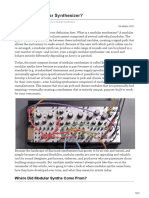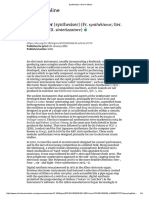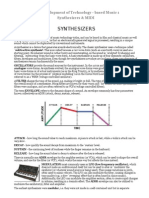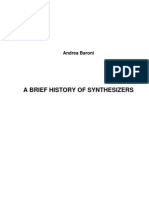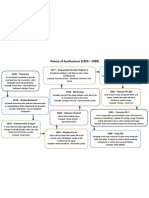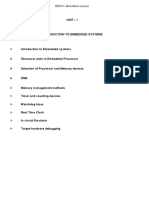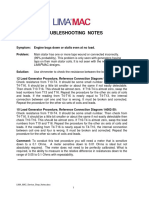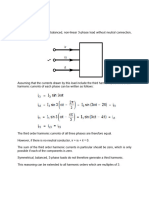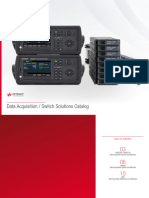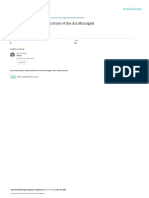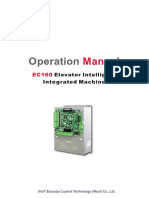Class 4 Week 5
Syntonizer
o The synthesizer is an instrument that can mimic and mix sounds from
instruments.
o The early synthesizer used an oscillator to create the sounds
o 1950s was the emergence of popular music
o Classical music started to become less popular and you see a shift to abstract
modern music.
Musique concrete
o In the 1940s here was a demand for new sounds in music
o Different people were experimenting with producing music from everyday
sounds and effects
o Reel tape recorders were used to record these everyday items.
o Looping was when two ends of a section of analog tape would be spliced
together to form a literal closed loop.
Modular Moog
o Robert Moog developed the modular synthesizer in 1964 the first modern
synthesizer.
o It was called the modular synthesizers because there were modules in the
instrument that was laid out left to right.
o Colombian university developed the Mark 2 synthesizer in 1959. The first
programmable synthesizer.
o A German inventor Harald Bode was one of Moog’s influences for his
synthesizer. He continued making influences during the 1960s
o Wendy Carlos (formerly Walter Carlos before a sex change) first used the
synthesizer to create a piece of classical music in 1968.
o Switched on Bach was her most popular piece. An album of music that
recorded Bach’s own music using a synthesizer.
o She was very involved with the continued development of the Moog
synthesizer and made many suggestions to its inventor.
o The music didn’t sound like anything the audience had heard before
o In the early 1970s
o The oscillator generates the sound and filter changes the sounds
o Envelope generators allow users to control the different stages of a sound on
a synthesizer
o The instrument was monophonic, which means it could only play one note at
a time
o The cost of this synthesizer in today’s money is $91,000
o The music was very complex needed specialized programmers to make it
work.
� o It was popularly used in the Beatles song “Here comes the Sun” and Jan
Hanner.
Mini Moog
o Was develop in the 1970 by Bill Hemsath by sawing a keyboard in half and
wiring it with elements of the larger Moog Synthesizer
o Sold for $10000
o Bob Marley used this during his time.
o It used transistors which were developed in 1947
o In regards to the design of the mini mooge the creator stated that they
originally wanted to use IC chips but the sound wasn’t the same. So instead
they kept using the transistors
o Coincided with the development of the microprocessor
o Used to make the synthesizer more complex
o The Minimoog had a pitch wheel which can play a note and change the pitch
of the music. Removal of the dominance of equal temperament
o Was developed
o The synthesizer was capable of portamento- Sliding the pitch from one note
to the other
o Mid 1970s the synthesizer became polyphonic.
o Started of from a guitar amplifier company
o The first Mini Moog was called the Model A
o The filter was overdriven
Prophet 5 and OBX
o Prophet 5 synthesizer was the first synthesizer to have microprocessors.
o It was also the first polyphonic synthesizer that could store music and be
portable.
o Used wave flavor synthesis in 1960
o Used sound processor called linear FM
o Corgen 1 1980s



